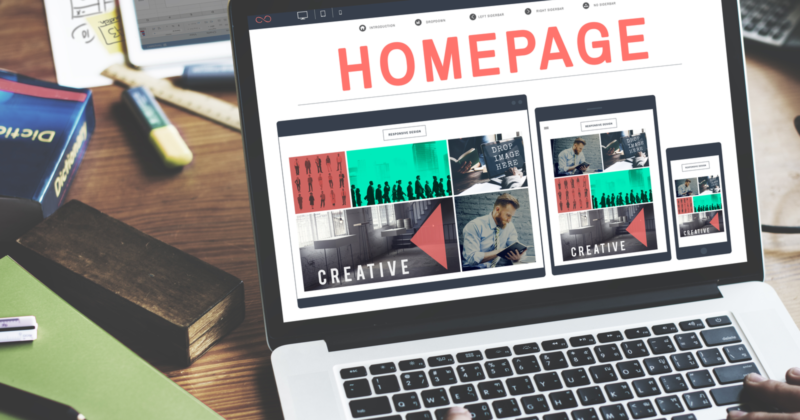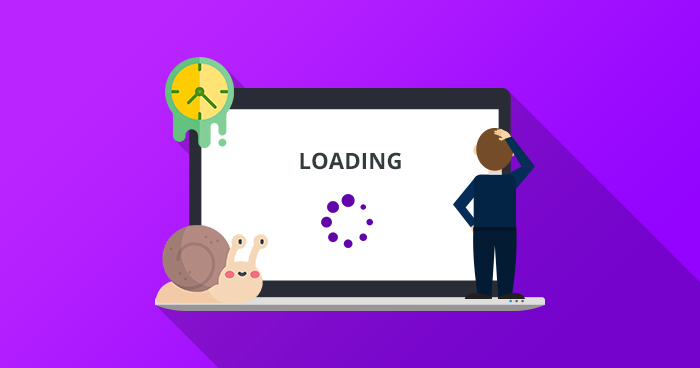Your website isn’t just a digital presence—it’s your handshake, your storefront, your pitch. Mess it up, and you’re handing credibility over to competitors. Today, let’s get real about what might be sabotaging your online reputation without you even realizing it.
Key Points
- A cluttered layout frustrates users.
- Mobile compatibility is critical for trust.
- Slow loading speeds push visitors away.
- Bad typography creates confusion.
- Ignoring SEO equals being invisible.
1. A Cluttered Homepage Sends People Running

Imagine walking into a store and finding merchandise piled everywhere with no sense of order. That’s what a cluttered homepage feels like to visitors. They can’t find what they need, so they leave.
Key Symptoms of a Cluttered Homepage:
- Too many pop-ups or banners.
- Irrelevant, overwhelming text blocks.
- Lack of clear navigation.
How to Fix It:
- Stick to one clear call-to-action (CTA).
- Use white space strategically to make elements stand out.
- Limit pop-ups to one well-timed interaction, like a newsletter prompt.
Practical Example:
Take inspiration from MacMedia Marketing, which focuses on streamlined layouts and actionable CTAs. Their clean designs let visitors instantly understand what’s offered without the digital equivalent of shouting.
2. Mobile Unfriendliness = Losing Half Your Audience
People aren’t sitting at desktops like they used to. Everyone scrolls on their phones. A poorly designed mobile site instantly alienates half your audience.
Signs Your Mobile Site is Failing:
- Text too small to read.
- Buttons impossible to tap.
- Images don’t resize correctly.
Pro Tips for a Mobile-Friendly Site:
- Use a responsive design template.
- Test your site on various devices (phones, tablets, etc.).
- Prioritize speed—mobile users expect snappy results.
- Simplify navigation to a thumb-friendly size.
3. Slow Loading Speed = A Fast Exit

A slow website is like a store with a stuck door. People won’t wait to get in—they’ll move on to competitors.
Top Causes of Slow Sites:
- Overloaded with heavy media files.
- Bloated code or too many plugins.
- Poor-quality hosting.
Key Benefits of Faster Sites:
- Visitors stay longer.
- Higher rankings in search engines.
- Better conversion rates.
Quick Fixes:
- Compress images using tools like TinyPNG.
- Switch to a reliable hosting service.
- Minimize JavaScript and CSS files.
4. Poor Typography Turns Readers Away
Typography isn’t just about looks; it impacts how users experience your content. A mismatch in font styles or unreadable text sizes makes users bounce faster than a rubber ball.
Common Typography Mistakes:
- Overly decorative fonts that are hard to read.
- Inconsistent styles across pages.
- Text sizes that strain the eyes.
Recommendations:
- Stick to clean, professional fonts like Arial, Roboto, or Helvetica.
- Use no more than two font styles across your site.
- Keep body text size between 14-16px for readability.
5. Ignoring SEO Is Costing You Visitors

Even the most beautiful website is useless if no one can find it. SEO isn’t a luxury—it’s a necessity.
Why SEO Matters:
- It drives organic traffic.
- Improves rankings in search results.
- Builds long-term credibility.
Steps to Improve SEO:
- Research and use relevant keywords.
- Write concise and engaging meta titles/descriptions.
- Optimize all images with alt text.
- Regularly update your site with high-quality content.
Pro Tip:
Think of SEO as planting a tree. The effort you put in now ensures steady growth and long-term visibility.
6. Broken Links Are a Trust Killer
Broken links shout one thing: neglect. Clicking a dead-end page leaves visitors frustrated and questioning your attention to detail.
How Broken Links Damage Credibility:
- Frustrate users trying to find information.
- Signal poor maintenance to search engines.
- Lower your rankings in search results.
How to Check for Broken Links:
- Use tools like Screaming Frog or Google Search Console.
- Manually test your key pages monthly.
Pro Tip:
Redirect broken links to related pages. For example, instead of leading visitors to a 404 error, guide them to your homepage or another relevant section.
7. Lack of Social Proof Hurts Trust
People trust people, not faceless businesses. If you don’t showcase testimonials, case studies, or reviews, you look unreliable.
How to Add Social Proof:
- Display testimonials prominently.
- Share real customer success stories.
- Add trust badges or certifications for credibility.
Practical Example:
Feature a testimonial carousel on your homepage. Highlight specific results your product or service delivered.
8. Overloading with Information Confuses Visitors

Your website isn’t a textbook. Throwing too much at users overwhelms them and leads to decision fatigue.
How to Simplify Information:
- Use short, focused paragraphs.
- Incorporate bullet points for clarity.
- Prioritize must-know details and minimize fluff.
Key Benefits of Simplified Content:
- Visitors find answers quickly.
- Increases time spent on your site.
- Improves conversions by guiding users effectively.
9. Generic Stock Photos Look Lazy
Generic images scream, “I didn’t care enough.” Visitors want authenticity, not cookie-cutter visuals they’ve seen elsewhere.
Better Alternatives to Stock Photos:
- Hire a professional photographer.
- Use real images of your team, office, or product.
- Select high-quality, relatable stock images sparingly.
Pro Tip:
Choose photos that evoke emotion or showcase your unique identity. For example, a bakery could feature pictures of its team baking fresh bread instead of generic bread shots.
10. Outdated Content Hurts Your Reputation

Nothing screams neglect louder than a blog post from 2016 sitting on your homepage. Regular updates keep your site fresh and relevant.
How to Keep Content Fresh:
- Update older blog posts with current information.
- Post new content monthly.
- Add an events calendar or seasonal promotions.
Benefits of Updated Content:
- Boosts SEO rankings.
- Signals active engagement to visitors.
- Builds trust by showing you’re up-to-date.
FAQs
- Why does website speed matter so much?
A slow site makes users leave before they even see your content. Fast sites keep visitors engaged, improve SEO, and encourage longer browsing. - How often should I update my website?
At least monthly. Regular updates show users and search engines that your site is active and reliable. - What is the best way to test my mobile site?
Use tools like Google’s Mobile-Friendly Test. Manually check your site on multiple devices to ensure smooth navigation and readability. - How can I find and fix broken links?
Use free tools like Google Search Console to identify broken links. Redirect users to active pages or remove outdated links entirely. - What’s the quickest way to improve trust on my website?
Add testimonials, case studies, and reviews. Social proof reassures visitors and builds immediate credibility.
Closing Thoughts
Your website is more than just a digital space; it’s your reputation. Fixing design missteps, improving usability, and keeping content fresh can save your online credibility. Start small, stay consistent, and remember: trust builds slowly but can disappear instantly.


